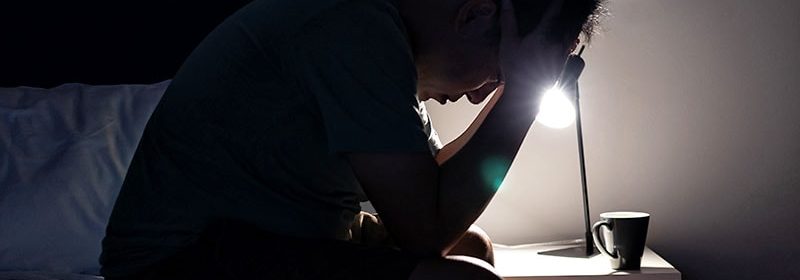Peak Seasons, Times for Suicidal Thoughts, Attempts ID’d

Suicidal ideation peaks during the winter but suicide attempts are most common in late spring and early summer in the early hours of the morning, new research shows.
In addition, the results from Harvard University’s Project Implicit Health also show that people are most likely to make an attempt at suicide between 4 and 6 AM.
“No research has demonstrated a peak in suicidal ideation in winter until our paper,” study investigator Brian O’Shea, PhD, assistant professor of social psychology at the University of Nottingham in the United Kingdom, told Medscape Medical News.
“Most people incorrectly assume that suicide behaviours peak in winter and are surprised, as I was, when learning about this phenomenon, that suicide actually peaks in spring/early summer,” he added.
However, at least one expert cautioned that the database, which comprises mostly responses from younger women, doesn’t capture responses from those who are most likely to attempt suicide: older men with substance abuse.
The findings were published online May 12 in Translational Psychiatry.
New Insight Into Suicide Risk
Previous studies examining the seasonality of suicides and suicide attempts have reported a peak in spring and early summer, but there has been very little information about why this may be, the investigators note.
O’Shea and his colleague from the University of Amsterdam, René Freichel, mined one of the databases from Project Implicit Health, which contains self-report measures on suicidal ideation, self-harm, and past suicide attempts, as well as respondents’ implicit biases on these topics.
The analysis included data from 10,000 respondents living in the United States, United Kingdom, and Canada provided between April 2012 and November 2018.
The sample was predominantly young and female, with 38% (3247) of the sample reporting that they had made at least one suicide attempt.
The researchers found a peak in negative mood and desire to die occurring in December, especially among those who reported attempting suicide (P ≤ .001)
Suicidal ideation peaked approximately 3-4 months before the annual seasonal crest of suicide attempts in early spring and summer.
“Affected individuals may become severely depressed and experience a lack of energy throughout the winter months. Essentially, this period may put them below a threshold of severe suicide risk as the high level of suicidal ideation coincides with a low level of energy,” said O’Shea.
When the days get longer, brighter, and warmer, these changes likely improve an individuals’ mood, he explained. “Hence, the most at-risk individuals become slightly less depressed and may gain more energy to contemplate and plan their method to attempt suicide,” O’Shea noted.
A major limitation of the study includes the fact that all responses included in analysis were based on self-report.
To confirm the findings future research should include ecological momentary assessment, which involves using a large community sample to question participants about suicidal intent at various time points, along with real-time monitoring of vital signs, said O’Shea.
Ideally, the investigators note, the study’s findings will inform clinician assessments of patients who are at risk for suicide.
A Research Gap?
Commenting on the findings for Medscape Medical News, Justin Shuster, MD, MPH, assistant professor of psychiatry at the University of Pittsburgh in Pennsylvania and medical director of two psychiatric units at Western Psychiatric Hospital, noted that the database used in the study did not include responses from those who were most likely to attempt or commit suicide: older men with a history of substance abuse, who require social supports, and who have a family history of suicide.
Dr Justin Shuster
Though Shuster agreed with O’Shea about the possibility that spring brought energy to a desire to take one’s life, he had another theory.
“When people are depressed in the winter, they expect to feel better with the advent of the warmer weather in spring. When they don’t feel better, they may think to themselves, ‘If I’m going to feel like this forever, I may as well follow through with these plans,'” he said.
As for the early morning attempts, he noted that 4-6 AM is often when people are alone, and there are fewer distractions.
“The other thing I see a great deal of clinically is intoxication,” said Shuster. “Either intoxication with substances or alcohol, or the fact that intoxication is waning at those early morning hours, and people are becoming desperate as they face a new day,” he said.
The study was funded by a German Academic Exchange Service Scholarship and an EU Horizon 2020 Fellowship. O’Shea reports being an unpaid member of Project Implicit’s Scientific Advisory Board and is on the Executive Committee of Project Implicit Health.
Translational Psychiatry. Published online May 12, 2023. Full text
For more Medscape Psychiatry news, join us on Twitter and Facebook
Source: Read Full Article
